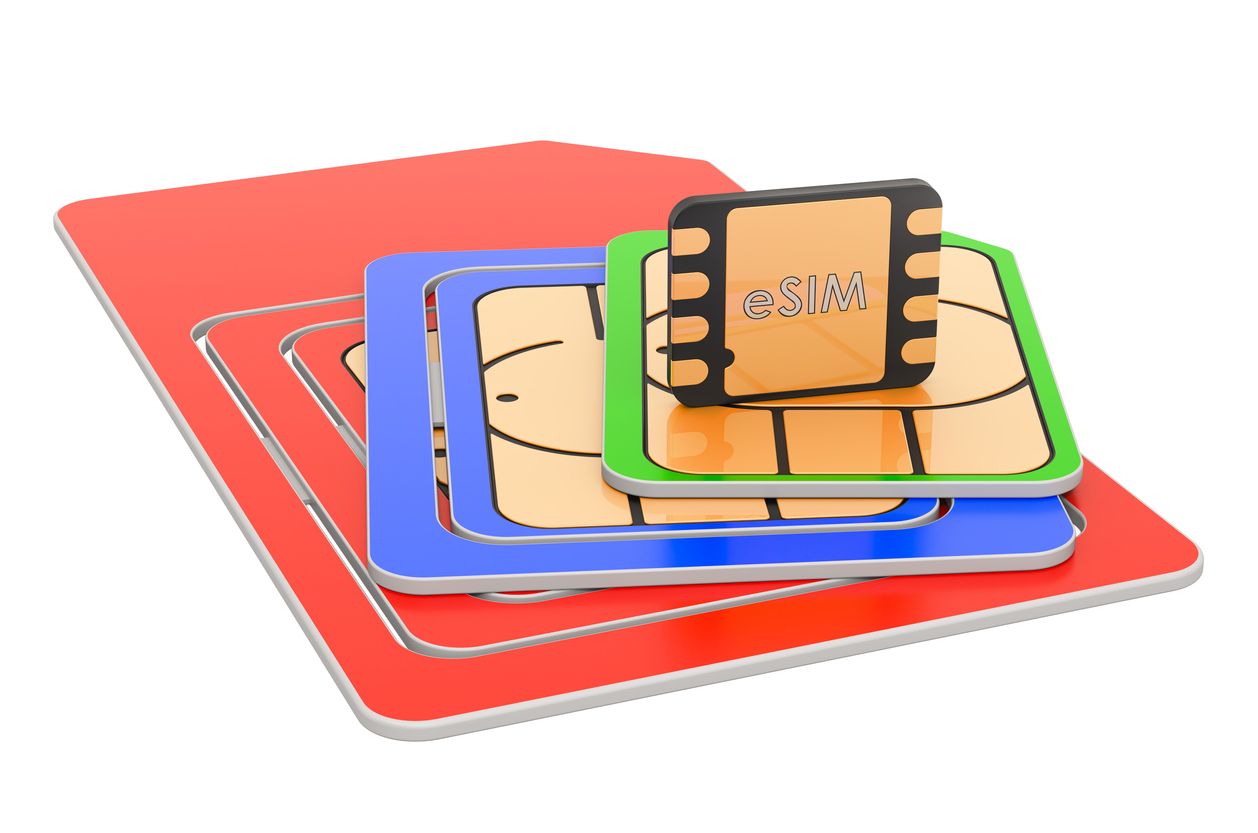eSIM
Do eSIMS impact signal strength?
And the factors that impact signal strength
In today's world, signal strength and speed are some of the most important factors when it comes to connectivity. Whether it's for work, socializing, or accessing information, having a strong and reliable signal is crucial. In our previous blog post, we discussed the impact of eSIM's on signal speed; and in this post, we will take a look at the other component of it - signal strength.

Understanding the Basics of eSIM Technology
Before we can evaluate the signal strength of eSIM, let's do a quick recap of what an eSIM is. To put it simply, an eSIM, or embedded SIM, is a virtual SIM card that is built directly into a supported device. An eSIM is a small chip that is soldered onto the device's circuit board, eliminating the need for a physical SIM card slot. It stores all the necessary information to connect to a cellular network, including network credentials and encryption keys. This technology has gained popularity due to its flexibility and convenience.
Highly rated 4.4/5.0 on Trustpilot
Save up to 50% on roaming
Fast and reliable network
How Does an eSIM Work?
The functionality of an eSIM is similar to that of a traditional SIM card, but with added benefits. When you activate an eSIM, the device communicates with the network provider to establish a secure connection. This process, known as provisioning, allows the device to download the necessary network profiles and configurations. Once the eSIM is successfully provisioned, you can start enjoying cellular services.
One of the key advantages of eSIM technology is its ability to support multiple network profiles simultaneously. This means that you can have multiple network providers programmed onto your device, and switch between them as needed. For example, if you frequently travel internationally, you can have a local network profile for each country you visit, ensuring that you always have access to affordable and reliable cellular services.
Additionally, eSIM technology opens up new possibilities for IoT (Internet of Things) devices. With traditional SIM cards, it can be cumbersome to manage and update the connectivity of numerous devices. However, with eSIMs, provisioning and managing network profiles can be done remotely, making it easier to deploy and maintain IoT devices on a large scale.
Comparing eSIM and Traditional SIM Signal Strength
Now that we have a grasp on what eSIM technology entails, let's dive into the topic of signal strength. When it comes to receiving a good signal, there are multiple factors at play. Let's explore some of the key factors and compare eSIM signal strength with that of traditional SIM cards.
Factors Affecting Signal Strength
Signal strength can be influenced by various factors, such as distance from the cell tower, obstructions, interference, and the device's antenna quality. These factors apply to both eSIM and traditional SIM cards, meaning that the signal strength is not solely determined by the type of SIM card being used.
When it comes to distance from the cell tower, the closer a device is to the tower, the stronger the signal strength will be. However, if there are obstacles in the way, such as tall buildings or dense vegetation, the signal may weaken or become obstructed. Additionally, interference from other electronic devices or radio waves can also impact signal strength.
Another important factor is the quality of the device's antenna. A device with a high-quality antenna will be able to capture and transmit signals more effectively, resulting in better signal strength. However, this factor is independent of the type of SIM card being used, as both eSIM and traditional SIM cards can be used in devices with varying antenna qualities.
eSIM vs. Traditional SIM: A Technical Perspective
From a technical perspective, there is no inherent advantage or disadvantage when it comes to signal strength between eSIM and traditional SIM cards. Both types of SIM cards rely on the same underlying cellular network infrastructure to provide signal coverage. Therefore, any differences in signal strength are likely due to external factors rather than the type of SIM card being used.
It's important to note that eSIM technology offers the same level of signal strength as traditional SIM cards because it operates on the same network infrastructure. The main difference between the two lies in the form factor and the way they are provisioned - while traditional SIM cards are physical cards that need to be inserted into a device, eSIMs are embedded directly into the device's hardware.
However, when it comes to signal strength, both eSIM and traditional SIM cards are subject to the same external factors that can impact signal quality. While eSIM technology offers the convenience of not needing to physically swap SIM cards, it does not provide any inherent advantage or disadvantage in terms of signal strength compared to traditional SIM cards. Ultimately, the quality of signal reception depends on various factors, including distance from the cell tower, obstructions, interference, and the device's antenna quality.
The Role of Network Providers in eSIM Signal Quality
While the technology behind the eSIM itself does not directly impact signal strength, the role of network providers in supporting eSIM is crucial. Let's explore how network providers contribute to signal quality and coverage.
How Network Providers Support eSIM
Network providers play a vital role in ensuring a seamless eSIM experience. They are responsible for managing the network infrastructure and optimizing signal coverage. By continuously improving their network infrastructure and investing in advanced technologies, network providers contribute to better signal quality for both eSIM and traditional SIM cards.
One way network providers support eSIM is by strategically placing their cell towers and antennas. These structures transmit and receive signals, allowing users to connect to the network. Network providers carefully analyze the geographical landscape and population density to determine the optimal locations for their towers. By strategically placing their infrastructure, network providers can maximize signal coverage and minimize signal interference.
Additionally, network providers regularly monitor and maintain their network equipment to ensure optimal performance. They conduct regular inspections, perform necessary repairs, and upgrade outdated equipment. This proactive approach helps prevent signal disruptions and ensures a consistent and reliable signal experience for the users.
Impact of Network Coverage on eSIM Signal
When it comes to eSIM signal quality, network coverage plays a significant role. Areas with strong network coverage are more likely to provide a better signal experience for users on their network. Network providers strive to expand their coverage areas and enhance network performance to provide reliable signals for their customers.
Network providers continuously invest in expanding their network coverage to reach more remote and underserved areas. This expansion involves deploying additional cell towers and antennas to extend the network reach. By doing so, network providers aim to bridge the digital divide and ensure that eSIM users in rural or less populated regions have access to reliable signal quality.
Furthermore, network providers employ advanced technologies to improve signal quality and reduce signal interference. For example, they utilize signal amplification techniques to boost weak signals and minimize signal degradation. Additionally, network providers implement signal optimization algorithms that analyze signal strength and adjust transmission parameters to maintain a stable connection for eSIM users.
The Future of eSIM and Signal Strength
As technology continues to evolve, we can expect further advancements in signal quality. With ongoing improvements in network infrastructure and increased adoption of eSIM, signal reception is likely to improve across the board. Network providers will continue to invest in upgrading and expanding their networks, resulting in better signal experiences for users; and manufacturers of eSIM-compatible devices will continue to work on ensuring that the devices are able to effectively connect to the cellular networks.
As the demand for faster and more reliable connectivity grows, network providers are constantly working on enhancing their infrastructure. This includes deploying additional cell towers, implementing advanced signal boosting technologies, and optimizing network coverage in areas with high user density.
Furthermore, the increasing adoption of eSIM by device manufacturers and network operators will drive competition in the market. This competition will lead to further innovations and improvements in signal reception. Network providers will strive to offer the best signal quality to attract and retain eSIM users, resulting in a positive impact on overall signal strength.



